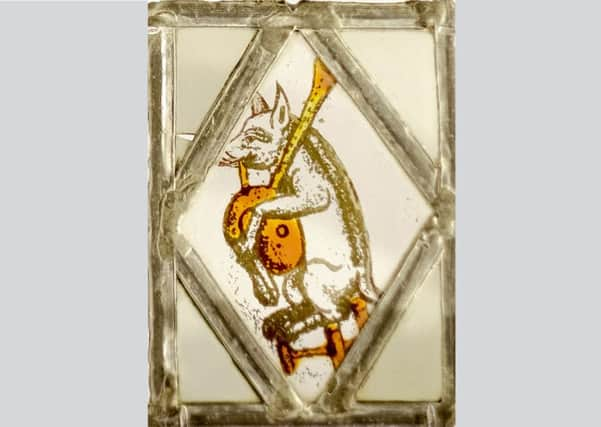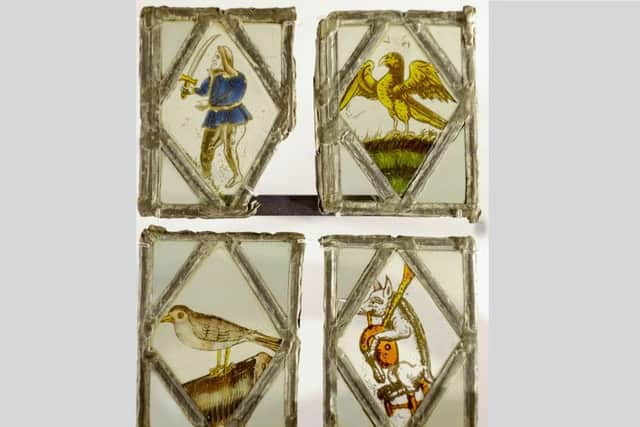Exhibit of the Week: Stained glass artwork with medieval symbol


Before you all start shouting, think on this: pigs are widely held to be intelligent animals who – yes, really – enjoy music. And a pig playing the bagpipes was possibly a medieval symbol for having a good time. Party on.
Our beautiful piping piggy is one of a set of four medieval stained glass panels which you can see in the Rotunda Museum. He shares equal billing with a nightingale-like bird, an eagle or perhaps griffon, and what our records tell us is a Turkish soldier with a sword. The four panels were donated to the museum in 1852 by a Mr M Tissiman, and probably date from the 14th century.
Advertisement
Hide AdAdvertisement
Hide AdPigs with bagpipes are surprisingly common images in medieval religious settings, although no one seems to know when the two were first put together, or why. Close to home, you can find a carved wooden pig and pipes in Beverley Minster, while Ripon Cathedral has one decorating a misericord – those small wooden perches underneath hinged flip-up seats which allowed the lucky worshipper to take the weight off their feet a little during long periods of prayer.


Further afield, you can find one of the most famous bagpiping pigs in this country carved in stone as a gargoyle on the roof of Melrose Abbey in the Scottish Borders. There are also examples in Manchester Cathedral, in churches in Lincolnshire and Cornwall, and on a pulpit in Worcestershire.
And the joyful image isn’t confined to this country – European medieval examples can be found in Danish wall paintings, German sculptures, Dutch pewter brooches and French illuminated manuscripts.
But back to our piggy friend, who’s portrayed in stained glass. The website of The Stained Glass Museum in Ely, Cambridgshire – the only museum in this country completely dedicated to the art form – tells us that early references to it date as far back as the 7th century, and that by the 12th century, it had become a relatively sophisticated art form.
Advertisement
Hide AdAdvertisement
Hide AdThe techniques used in the making of stained glass pieces have changed very little since then. A window then, as now, comprised pieces of coloured glass joined together by a lattice of lead. Known as ‘came’, the lead strips that hold the glass sections together are U- or H-shaped in cross section so that the glass slots neatly into them.


What has evolved is the production of the glass – in the 13th century, it was pretty basic, with each section probably having only one colour, and details painted on it in dark brown or black.
By the 14th century, the painted details had become more refined, and new colours had been discovered, including violet and dark green. In the 15th century, colours generally became paler and in the 16th and 17th centuries, a range of enamel paints which could be painted onto glass was developed. Pictures became more realistic, and less religious. Eighteenth-century stained glass was almost entirely secular, while in the 19th century there was a return to religious themes, led by the Pre-Raphaelites and by the Arts and Crafts movement and its luminaries like William Morris, who were influenced by medieval craftsmen.
We’re fortunate in Scarborough to have some particularly fine examples of Pre-Raphaelite and Arts and Crafts stained glass in St Martin’s-on-the-Hill Church – visit and you can see windows designed by no less than William Morris, Sir Edward Burne-Jones, Dante Gabriel Rossetti, Philip Webb and Ford Madox Brown.
Advertisement
Hide AdAdvertisement
Hide AdThe four medieval stained glass panels are part of the Scarborough Collections, the name given to all the museum objects and artwork acquired by the borough over the years, and now in the care of Scarborough Museums Trust. For further information, please contact Collections Manager Jennifer Dunne on [email protected] or 01723 384510.